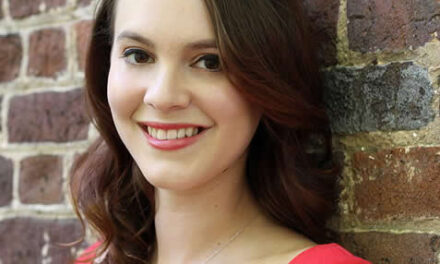Soothing balm for the troubled soul was found starting at 3:00 p.m. September 16 in the auditorium of the North Carolina Museum of Art. As the third presentation of this season’s successful joint NCMA/Raleigh Chamber Music Guild’s Sights and Sounds on Sundays series, the locally based Aurora Musicalis salved us with two rarities and one great masterpiece. Three members of the ensemble are musicians from the North Carolina Symphony: Concertmaster Brian Reagin, Principal Clarinetist Jimmy Gilmore, and Assistant principal Cellist Elizabeth Beilman. A frequent guest pianist, New York native Kari Miller, was able to participate only because she had flown down Monday before the attack on the World Trade Center towers.
The loquacious Gilmore gave some brief musical notes as well as comments on a loosely organized series of slides from the NCMA collection relating to the role of patronage in the arts. The program opened with a moving performance of Mozart’s Ave verum corpus, K.618, arranged for all four musicians. This was followed by silence in memory of the fallen. The formal program began with Mozart’s Piano Trio in C, K.548. Compared to the rest of his chamber music or that of Haydn, this Mozart trio is a comparatively light work. Berger’s book on chamber music, a favorite crib, only discusses two–K.502 and K.542. Miller played with the piano lid fully up and balanced well with her colleagues Reagin and Beilman. The work, in the galant style, was pleasant with a lot of repetition.
The real rarity was the next piece played, a Trio in E-Flat for clarinet, cello and piano by the Archduke Rudolf of Austria. He was the Hapsburg Austrian Emperor Franz I’s youngest brother, the most devoted of Beethoven’s patrons who became his piano and composition student at the age of 16. In 1809 he was one of three signatories that provided Beethoven with an annuity as long as he remained in Vienna. Gilmore aptly described the work as “quirky.” Although repetitive (without Mozart’s genius), it had a number of unexpected turns. There was a jaunty little episode for the clarinet set against cello pizzicatos. The fast scherzo featured a lurching clarinet figure and a delightful trio episode. A singing line in a series of variations on a theme from an octet by Prince Louis Ferdinand of Prussia dominated the last movement.
The concluding Beethoven Piano Trio in B-Flat, Op. 97 (“The Archduke”), dedicated to the aforementioned Rudolf, is well known. It is one of my favorite works, one I cannot hear too often and the perfect balm for this troubled week. The trio was beautifully balanced and played with fine string sonorities. In too many recorded and live performances there is a serious loss of momentum during the playing of subsidiary material between the noble and spacious opening theme and the staccato second theme. Like a treasured performance recorded by pianist Claude Frank with members of the Boston Symphony, Miller, Reagin and Beilman kept the impetus and phrased the piece with apt rhetorical flourishes. As I headed for the parking lot, another patron asked, “Wasn’t that a lovely performance?” Yes, it was.












